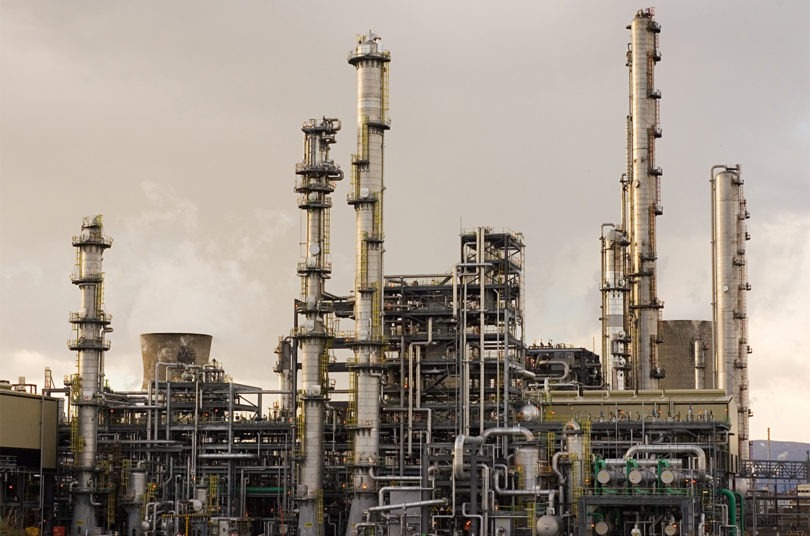In spite of efforts to shift towards renewable energy sources, oil remains the fundamental pillar of modern society. It serves as a fuel for heating and transportation, as well as a raw material for the production of plastics and pharmaceuticals. However, the process of separating crude oil into its different components requires a significant amount of energy, traditionally through the use of heat. This process is responsible for approximately 1% of global greenhouse gas emissions each year.
Chemists have now developed a new material that could potentially reduce the energy required for crude oil separation by more than half, if scaled up. This breakthrough could not only make the use of crude oil more environmentally friendly, but also more cost-effective for refineries, saving them billions of dollars in energy costs annually.
Ryan Lively, a chemical engineer at the Georgia Institute of Technology, who was not involved in the research, describes the potential savings as impressive. However, he notes that the durability of the new membranes still needs to be proven over extended periods of time. Additionally, conventional oil refineries may be hesitant to adopt this new technology due to the substantial investments they have already made in traditional separation systems. Nevertheless, Lively suggests that these membranes could be quickly adopted in new refineries that are designed to separate hydrocarbon mixtures derived from biofuels or synthetic fuels produced with renewable electricity.
Crude oil is composed of a vast array of chemicals, and the initial step in petroleum refining involves the separation of these components through distillation. During this process, the crude oil is heated to approximately 500°C, causing lighter components, like those found in gasoline, to vaporize at lower temperatures and be collected, while heavier components, such as home heating oil, vaporize at higher temperatures.
Two years ago, researchers led by Andrew Livingston, a chemical engineer at Queen Mary University of London, and Ryan Lively reported in the journal Science that it was feasible to accomplish this separation through the use of membranes rather than distillation. They developed membranes with built-in pores that allowed small and light hydrocarbons to pass through, while blocking larger and heavier ones. However, the passage of the desired hydrocarbons through these membranes was too slow to make them practical for real-world applications.
To overcome this limitation, Livingston and his colleagues turned to a technique called interfacial polymerization, which is typically used in the production of ultrathin water desalination membranes. They hoped that thinner membranes would facilitate the more rapid passage of the desired hydrocarbons. However, the conventional membranes used in desalination tended to disintegrate when exposed to hydrocarbons, including industrial solvents.
To address this issue, the researchers modified the polymers that make up traditional membranes. They created individual polymers by linking a hydrophobic (oil-like) portion to a hydrophilic (water-like) strand. When these molecules were introduced into a mixture of oil and water, they self-assembled into small bubbles, or vesicles, with the hydrophobic part facing inward. The researchers then utilized the interfacial polymerization technique to spread these vesicles into a continuous, ultrathin sheet and link all the polymer units together to form a durable membrane.
This approach proved successful. The hydrophobic cores of the vesicles facilitated the efficient passage of selected hydrocarbons (based on their size and other characteristics) through the membrane, with a speed approximately 10 times faster than previous oil separation membranes. The researchers also demonstrated that by tailoring the chemical composition of the polymers, they could create different membranes that selectively allowed the passage of hydrocarbons of varying sizes.
Neel Rangnekar, a chemical engineer with Exxon and a member of the research team, suggests that shifting from distillation to membrane separation could potentially save up to 50% of the energy cost associated with heating crude oil and 75% of the electricity cost involved in refining. This amounts to at least $3.5 billion per year.
David Sholl, a separations expert at Oak Ridge National Laboratory who was not involved in the study, characterizes the findings as very exciting. Nonetheless, Sholl acknowledges that the novel membranes are not yet ready for industrial use. They still need to be scaled up from the size of a standard sheet of paper to hundreds of square meters and proven to be durable over months of continuous use. Nevertheless, Sholl believes that these promising results will encourage oil companies to further explore this technology, which has the potential to save money and reduce carbon emissions. He asserts that all chemical companies are extremely interested in achieving these goals.

